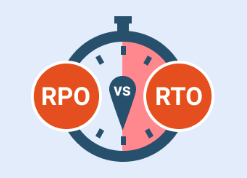We are excited to introduce MSP360 Managed Backup 7.9 with enhanced license management, improved monitoring accuracy, and expanded storage options. Continue reading
Managed Backup Pricing: FAQ for MSPs
Setting prices for managed backup services is a difficult task. There are many factors to weigh and variables to consider, such as whether you should discount for archival storage tiers and whether to include disaster recovery services as part of managed backup pricing. Continue reading
Is Your Backup and Disaster Recovery Vendor Storage-Agnostic?
Many backup and disaster recovery (BDR) vendors in the market host backups in their own clouds. While this doesn’t sound like a big deal, it can be, especially when considering control, security, and pricing.
NAS Backup Strategy: Local, Cloud and Hybrid Backup
Unlike typical external hard drives, NAS devices provide built-in operating systems that support features like remote access, printer streaming, or native media streaming. Additionally, you can save images, server data, application databases, and so forth without any supplementary management device. Continue reading
QNAP Cloud Backup: Best Practices, Software to Use
A QNAP NAS is a great way to keep data safe and available. But the fact is that even if you have data redundancy built into the NAS, it’s still important to perform QNAP cloud backups as well to back up your NAS data to a remote location. Not only does backing up QNAP data to the cloud help you to meet the requirements of the 3-2-1 backup rule, but it may also be required by compliance regulations. Continue reading
Why Cloud-Based Storage Is Better Than Traditional Storage
It’s never been more important to back up business data.
Data breaches are happening every day, and there aren’t any signs of attacks slowing down anytime soon.
Even though there are numerous ways to back up data, using cloud-based storage is becoming increasingly popular among businesses. Continue reading
What Is S3 Intelligent Tiering and When Should I Use It?
In the whirlwind of re:Invent 2018, AWS announced a number of new features and improvements, including new database options, S3 Batch operations, and machine learning services. Continue reading
SAN vs NAS: Difference Explained
When you are looking for local storage for a business, there are two options: NAS (Network Attached Storage) and SAN (Storage Area Network). Today, you will find out what the difference is between storage area network and network attached storage and whether it is NAS or SAN that fits your needs
Microsoft Azure vs Amazon S3 Data Transfer Pricing Comparison
Bandwidth and data transfer pricing can have a significant cost on your cloud-computing bill. And unlike the basic pricing of cloud-computing instances, data transfer costs on clouds like Amazon Web Services (AWS) and Azure can be difficult to compare, because each cloud provider uses a somewhat different model for data transfer pricing. Continue reading
What Is the Best Backup Schedule for a Small Business?
“We should have been setting a rigid backup schedule”, – that’s the thought that eventually comes into IT-department minds after a disaster strikes. Below we shared thoughts and advice for a small business backup schedule, that would not let such drama occur. Continue reading
Part 3: SMB Backup Infrastructure: Hybrid Systems
This is the third in a series of articles on setting up backups. The first was on backing up local infrastructure. The second was on setting up backups when a company’s applications and data are all in the cloud. This article addresses the third scenario: when a company has some data in the cloud and some local. This might be a scenario where the basic productivity apps like the office suite are hosted locally, and specialized apps like payroll or enterprise resource planning (ERP) apps are in the cloud. Continue reading
Part 2: SMB Backup Infrastructure with Cloud Apps
This article covers organizations that have no in-house IT infrastructure; they have PCs, or ChromeBoxes, or other terminals, but they’re only used to access apps via the browser. It might be MS Office 365, Google Apps, another cloud office suite, or other Cloud apps as well, such as sales force automation, customer relationship management, accounting software or enterprise resource planning. Continue reading
















